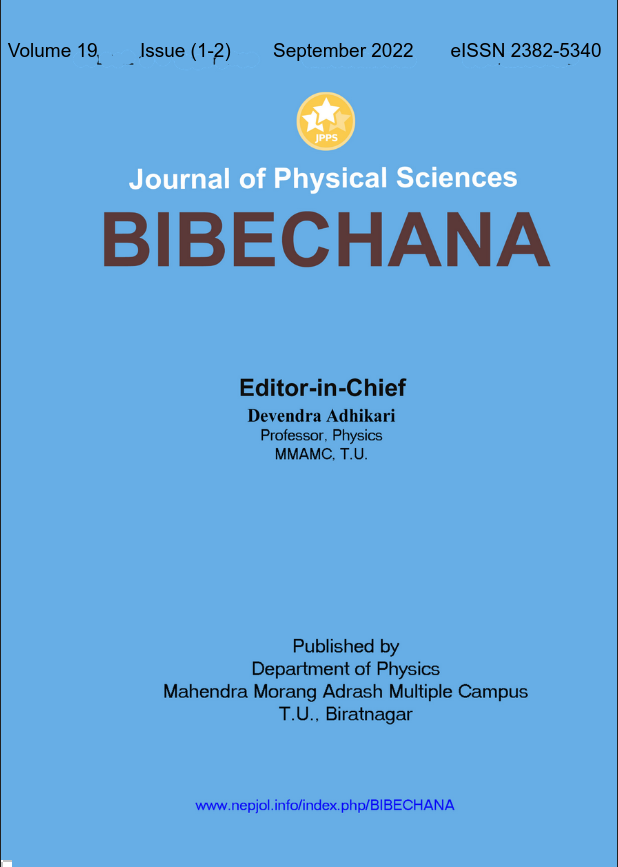Real-Time Traffic Prediction Using Monte Carlo Simulation: A Case Study of Kantipath Road, Kathmandu, Nepal
DOI:
https://doi.org/10.3126/bibechana.v19i1-2.46394Keywords:
Traffic congestion/jam, Distribution characteristics, Composition of vehicles, Traffic prediction, Monte Carlo SimulationAbstract
This paper deals with the model development for the analysis of traffic data to improve efficiency and sustainability of the existing transportation system of a section of the Kantipath road, Kaiser Library to Jamal. The traffic data of the two extreme locations of the section of the road were taken using digital video recorders. The data were extracted manually and statistically analyzed to test the different statistical distribution of traffic flow using Kolmogorov–Smirnov and Shapiro–Wilk test, and to find out different categories of vehicles along with their flow and peak hour. The Kolmogorov–Smirnov test reveals the traffic flow distribution is the same as Cauchy, Normal, Inverse Gaussian, Logistic, Gamma, and Beta distributions. The dataset of Kaiser Library was used to predict the real-time traffic flow of Jamal employing Monte Carlo Simulation in accordance to normal distribution. The forecasted and observed traffic flows show better agreement.
BIBECHANA 19 (2022) 83-89
Downloads
Downloads
Published
How to Cite
Issue
Section
License
Copyright (c) 2022 Niraj Kumar Shah, Prena Chaudhary, Gopi Chandra Kaphle

This work is licensed under a Creative Commons Attribution-NonCommercial 4.0 International License.
This license enables reusers to distribute, remix, adapt, and build upon the material in any medium or format for noncommercial purposes only, and only so long as attribution is given to the creator.




